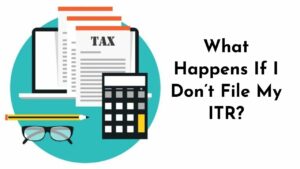The ITR-4 form is for all those taxpayers that have applied for a presumptive income scheme in compliance with Section 44AD, Section 44ADA, and Section 44AE of the Income Tax Act. That being said, if the revenue of the undertaking referred to above reaches Rs 2 crores, ITR-3 would have to be submitted by the taxpayer.
Who should file ITR 4?
The individual/HUF/partnership company whose overall income is the following for AY 2020-21 has to file ITR 4.
a. Under section 44AD or 44AE, business revenue.
b. Calculated professional wages under section 44ADA.
c. Salary/pension with sales of up to Rs 50 lakh.
d. Revenues from One House Property with revenues up to Rs 50 lakhs (omitting the loss that are brought forward).
e. Revenue from many other outlets of revenue of up to Rs 50 lakh (omitting earnings from lottery and income from horse races).
Read – Why is an income tax return important?
Note: 1. NOTE: This system can also be preferred by freelancers working in the above career provided their gross receipts do not surpass Rs 50 lakhs.
Who should not file ITR 4?
- This form cannot be used by a person who has income from wages, household property, or other sources above Rs 50 lakh.
- This method should not be used by a person who is either a director of a company or has invested in unlisted equity shares.
- A person, HUF, or partnership company whose account books must be audited in compliance with the 1961 Income Tax Act.
Major Changes made in ITR-4 for AY 2020-21
- Person taxpayers who follow the conditions of the company.
- (a) make cash deposits with a bank over Rs 1 crore, or.
- (b) suffered expenses in excess of Rs 2 lakh for international travel, or.
- (c) spending on energy in excess of Rs 1 lakh must also be sent to ITR-1.
The sum of a deposit or expense should be shown by the taxpayer.
- Under Part A, the’ Govt’ checkboxes stands are modified to ‘Central Govt’ and ‘State Govt’ under the ‘Job Nature’ section, and a tickbox’ Not available (e.g. family pension, etc.) has also been added.
- The return submitted in the section was divided between the usual filing and the reaction to the notices received.
- Under section 80EEA and section 80EEB, the ‘Schedule VI-A’ for tax deductions is revised to provide a deduction. In order to enter the information on donations under section 80G, a drop-down is given.
- Gross turnover or gross receipts that included profits earned even before the stated period from specified electronic modes in ‘Schedule BP’.
- Information of the applications for tax refunds relating to savings or purchases or charges incurred between 1 April 2020 and 30 June 2020.



